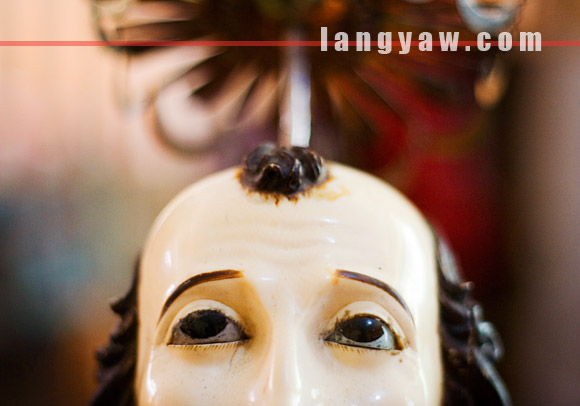
It was smaller than I expected as Leslie, a friend led me to the room where his aunt, just opened a small cabinet and retrieved the ivory image of the San Pedro to dress it up and prepare for the Good Friday procession. An heirloom piece that has been with the family ever since, a few generations ago, an ancestor was made caretaker of the image by the local Catholic Church.

 This is part of my Semana Santa series where I feature rituals and traditions observed in certain places during this solemn week in the Catholic calendar. Click on the image at the right to check the rest of the articles.
This is part of my Semana Santa series where I feature rituals and traditions observed in certain places during this solemn week in the Catholic calendar. Click on the image at the right to check the rest of the articles.
It was the practice in most places in Catholic Philippines during the Spanish colonial period where the prominent families of the town were also made caretakers of important church icons. Their roles were to safekeep, prepare for feasts by decorating the anda, a pedestal carried on the shoulders by the men, or the carroza, a processional carriage for bigger images. Here, one of a Visayan province’s old and major towns, where these images are smaller, these were meant to be placed on the anda.


The dressing doesn’t really take much time as it is much smaller compared to bigger images where it will take hours and lots of people, like the Santo Señor Sepulcro of Lucban. For the San Pedro, it was just Leslie and his aunt.
Good Friday is a busy day for the caretaker families. Like the others who have icons to look after, family and relatives take time off to decorate and prepare the carroza in time for the late afternoon procession.
Some of the women also gather at the house to practice the Miserere which they will sing accompanying the San Pedro, a tradition in the town. While they practice and the other decorate, some are also busy in the kitchen as they will need to feed the people who helped with the preparations.

Elaborately decorated carrozas are now ready to be transported to the church and by around 3-4 PM, its easy to spot these along the streets being pulled and pushed by volunteers or people who have been working for the families for years.
By 5PM or going 6, the procession winds its way around the town and when these carrozas arrive back at the church, it will be stripped of its flowers by folks who believe that these are blessed. For the San Pedro, it will be carried back to the house, taken down from its pedestal and stored until the next Holy Week.